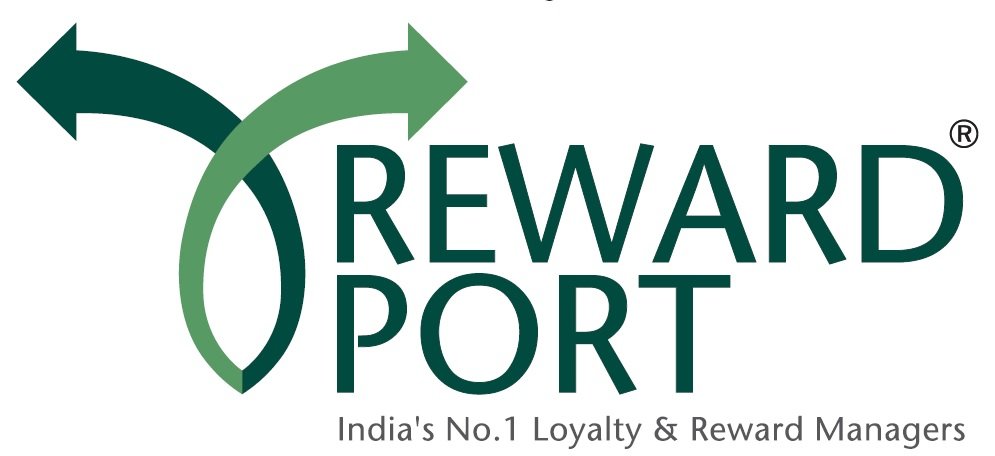Priya opens Zepto at 11:47 PM. She orders Haldiram’s Bhujia, pays ₹89 via UPI in 3 seconds, and receives her snack in 9 minutes.
Seamless? Absolutely.
Brand connection? Zero.
This scenario plays out 50 million times daily across Indian cities. UPI has made payments invisible. Quick commerce has made delivery instant. But in this frictionless world, brand loyalty has become the biggest casualty.
When consumers can get any snack delivered in 10 minutes with a single tap, why would they stick to one brand?
The answer lies in creating connections that transcend transactions. The smartest F&B brands are discovering that loyalty isn’t about discounts anymore—it’s about becoming part of their customers’ daily stories.
The 10-Minute Challenge: When Convenience Kills Connection
Every month, Indian consumers complete over 10 billion UPI transactions. Blinkit delivers groceries in 8 minutes. Zepto promises snacks in under 10. Swiggy Instamart turns impulse into instant gratification.
This convenience revolution has fundamentally rewired consumer behavior.
What happens when buying becomes too easy?
Meet Rohit, a software engineer in Bangalore. Six months ago, he was loyal to Lay’s chips. Today, he’s tried 14 different snack brands through quick commerce apps.
“Why stick to one brand when I can try something new every time?” he explains. “It’s just a few taps, and delivery is instant anyway.”
Rohit represents millions of Indian consumers who’ve shifted from brand loyalty to variety seeking. The friction that once protected brand relationships has vanished.
The real problem isn’t competition—it’s invisibility.
When purchases happen in seconds, brands become background noise. The emotional connection that drives loyalty requires time and attention that modern commerce doesn’t provide.
Which F&B Products Can Build Loyalty in the Instant Era?
Not every food product can create lasting loyalty in the quick commerce world. Success depends on finding the sweet spot between convenience and connection.
What makes certain F&B products “loyalty-proof” against instant switching?
The winners share four characteristics:
- Emotional significance in daily routines or cultural moments
- Quality differentiation that justifies price premiums
- Social sharing potential that extends brand reach organically
- Repeat purchase patterns that create multiple engagement opportunities
The Loyalty Champions: Products That Connect
Traditional Snacks and Namkeen: The Heritage Advantage
Haldiram’s isn’t just selling bhujia—they’re selling childhood memories and festival traditions. When Meera orders Haldiram’s for Diwali, she’s not comparing flavors; she’s recreating her grandmother’s celebration rituals.
This emotional weight makes traditional snack brands uniquely positioned for loyalty success. Customers don’t just buy the product; they buy into cultural continuity.
Health Beverages: The Lifestyle Statement
Paper Boat didn’t invent aam panna—they recreated the emotional experience of drinking it. Their customers aren’t just hydrating; they’re expressing identity through nostalgic choices.
Similarly, Real Juice buyers aren’t just purchasing vitamin C. They’re investing in health routines and lifestyle aspirations that create daily touchpoints with the brand.
Breakfast Products: The Family Decision
Saffola Oats sits at family breakfast tables across India, not because it’s convenient, but because it represents responsible parenting. When mothers choose Saffola, they’re choosing peace of mind about family health.
These products succeed because they embed themselves in routine decisions and value systems that transcend price comparison.
The Opportunity Categories: Untapped Potential
Regional Specialties Going National Local delicacies with authentic heritage stories can build nationwide loyalty by maintaining cultural authenticity while scaling distribution.
Premium Packaged Foods Ready-to-eat meals and gourmet ingredients that save time without compromising quality appeal to urban families willing to pay for convenience.
Functional Foods Products that deliver specific health benefits create loyal customers seeking consistent results rather than variety.
The Multi-Channel Loyalty Recipe: Beyond Points and Discounts
The most successful loyalty programs today don’t just reward purchases—they reward relationships. Smart brands are creating engagement ecosystems that make customers feel connected, not just compensated.
How do you build emotional connections in a digital world?
Buy & Earn: Making Every Purchase Feel Special
Traditional points programs fail because they treat every purchase identically. Modern approaches recognize that context matters more than transaction value.
When Rajesh buys Haldiram’s mixture for his evening tea, the brand could simply credit points. Instead, they send him a video about the artisan who perfected that mixture recipe, making his snack feel crafted, not manufactured.
QR codes on packaging become gateways to stories, not just reward accumulation. Customers scan to discover heritage recipes, meet the makers, or unlock limited-edition flavors.
Share & Earn: Turning Customers into Storytellers
Indian consumers share food experiences naturally. Festivals, family gatherings, and daily meals become social media moments. Smart brands facilitate this sharing instead of interrupting it.
Paper Boat encourages customers to share memories triggered by their drinks. “This reminds me of…” becomes a campaign that generates authentic content while rewarding emotional engagement.
During Diwali, Bikano doesn’t just sell sweets—they help customers create social content that celebrates tradition while showcasing products naturally.
Engage & Earn: Daily Connections Beyond Purchases
The strongest loyalty programs create reasons to interact with brands between purchases. They become helpful presences in customers’ lives, not just sales channels.
Real Juice could send seasonal health tips aligned with weather changes, helping customers stay healthy while positioning their products as wellness partners.
Saffola might offer family nutrition challenges that gamify healthy eating while creating positive brand associations with wellness goals.
Win & Sweepstakes: The Excitement Factor
Gamification works because it taps into fundamental human psychology. Well-designed games create anticipation and reward both effort and luck.
Haldiram’s could hide AR experiences in product packaging. Scanning different products unlocks different game levels, creating collection behavior that drives variety purchases within the brand ecosystem.
Daily spin wheels on brand platforms provide guaranteed rewards while creating habit-forming engagement patterns.
Learn & Earn: Positioning Brands as Trusted Advisors
Educational content builds authority while creating value beyond products. Customers begin viewing brands as knowledge sources, not just suppliers.
Saffola’s nutrition education programs position them as health experts, making their product recommendations feel like professional advice rather than marketing messages.
Regional sweet brands could teach traditional preparation methods, connecting modern convenience with cultural heritage.
Create & Earn: Customer Creativity as Brand Extension
User-generated content rewards flip the traditional advertising model. Instead of paying for brand messages, companies reward customers for creating authentic endorsements.
Recipe contests featuring brand products generate content while showcasing product versatility. Cooking videos, food photography, and creative usage ideas become brand assets created by passionate customers.
The Technology Behind Seamless Experiences
Modern loyalty programs require sophisticated platforms that unify multiple engagement channels while maintaining simplicity for customers.
What makes integrated loyalty systems work effectively?
Leading brands implement comprehensive platforms that serve as central hubs for all customer interactions. These solutions typically include dynamic landing pages with gamification elements, AI-powered customer service, and integrated analytics for program optimization.
Advanced reward intelligence systems help brands understand customer behavior patterns and personalize engagement strategies automatically. Social commerce integration enables seamless shopping from social media platforms while tracking engagement and conversion metrics.
The most effective platforms combine instant reward delivery, conversational customer support, and predictive analytics to create experiences that feel personal and responsive.
The Journey Transformation: Before and After Stories
Real transformation becomes clear when comparing traditional approaches with integrated engagement strategies.
Priya’s Health Journey: From Transaction to Transformation
Before: Priya bought various juice brands based on price and availability through quick commerce apps. No brand relationship, frequent switching, price-sensitive decisions.
After: Real Juice’s integrated program made her feel supported in her wellness goals. Daily health tips, hydration tracking, and seasonal recommendations created value beyond the product. She began viewing Real as her health partner, not just a beverage supplier.
The difference: Connection replaced convenience as the primary value proposition.
Rajesh’s Family Snacking: From Variety to Loyalty
Before: Rajesh’s family tried different snack brands constantly, creating household chaos and decision fatigue. No emotional connection, purely functional purchasing.
After: Haldiram’s family-focused program recognized different family member preferences while maintaining brand unity. Kids participated in AR games, his wife engaged with recipe content, and festival celebrations became brand experiences.
The difference: Individual engagement within family loyalty creation.
Meera’s Festival Preparations: From Seasonal to Year-Round
Before: Meera bought traditional sweets only during festivals, treating them as seasonal necessities rather than brand choices.
After: Her sweet brand’s cultural engagement program connected festivals with heritage stories and preparation traditions. She began viewing festival purchases as cultural participation, not seasonal shopping.
The difference: Cultural connection transformed seasonal transactions into emotional investments.
The Implementation Reality: Building Loyalty Ecosystems
Successful loyalty transformation requires systematic approach that balances innovation with operational practicality.
How do F&B brands begin this transformation?
Phase 1: Foundation Building
Start with basic digital reward systems that track customer interactions across channels. Focus on seamless point accumulation and simple gamification elements.
Phase 2: Social Integration
Add social sharing rewards and user-generated content programs. Enable customers to earn rewards for authentic brand engagement.
Phase 3: Personalization
Implement AI-powered recommendation systems and behavioral analytics. Create individualized experiences based on customer preferences and patterns.
Phase 4: Ecosystem Expansion
Develop comprehensive engagement platforms that support education, entertainment, and community building alongside traditional commerce.
Each phase builds upon previous investments while adding sophistication and depth to customer relationships.
The Cultural Advantage: Why Indian Brands Can Lead
Indian F&B brands possess unique advantages in building emotional loyalty compared to global competitors.
What makes Indian brands naturally suited for relationship-based loyalty?
Cultural Heritage: Traditional products carry emotional weight that transcends rational purchasing decisions.
Family Decision Patterns: Indian households make collective food choices, creating opportunities for multi-generational loyalty building.
Festival Integration: Regular cultural celebrations provide natural engagement opportunities throughout the year.
Regional Pride: Local brands can tap into geographic and cultural identity in ways global brands cannot.
Value Consciousness: Indian consumers appreciate brands that provide genuine value beyond basic products.
These cultural factors create natural foundations for loyalty programs that feel authentic rather than manufactured.
The Future of Food Loyalty in India
Consumer expectations continue evolving rapidly. Brands that understand emerging trends will maintain competitive advantages while those that remain static risk irrelevance.
What trends will shape F&B loyalty beyond 2025?
Voice Commerce Integration: Natural language ordering and customer service through smart speakers and mobile devices.
Sustainability Rewards: Environmental impact tracking and rewards for sustainable consumption choices.
Health Integration: Comprehensive wellness platforms that connect food choices with fitness goals and health outcomes.
Community Commerce: Social features that enable customers to influence product development and brand direction.
Predictive Engagement: AI systems that anticipate customer needs and provide proactive support and recommendations.
The brands preparing for these trends today will lead tomorrow’s loyalty landscape.
The Urgency of Transformation
The window for building loyalty in India’s F&B market is narrowing rapidly. Quick commerce platforms are training consumers to prioritize convenience over connection. Price comparison apps make switching effortless. Social media creates constant exposure to new alternatives.
What happens to brands that wait?
Delayed transformation means accepting commodity status in a market where differentiation becomes increasingly difficult. Customer acquisition costs rise while lifetime values decrease. Margin pressure intensifies as price becomes the primary differentiator.
What advantages do early movers gain?
First-mover advantages in loyalty program sophistication become difficult for competitors to overcome. Customer data insights improve targeting and personalization capabilities. Emotional connections create switching barriers that transcend rational comparisons.
The choice facing Indian F&B brands is clear: evolve customer relationships or accept commodity competition.
The time for loyalty transformation is now. Consumer expectations won’t wait for brands to catch up.
Creating lasting customer loyalty in India’s rapid commerce environment requires sophisticated engagement strategies that go beyond traditional rewards programs. Modern consumers expect brands to add value to their lives through education, entertainment, and emotional connection. The brands that master this integration will thrive while others compete solely on price and convenience.


